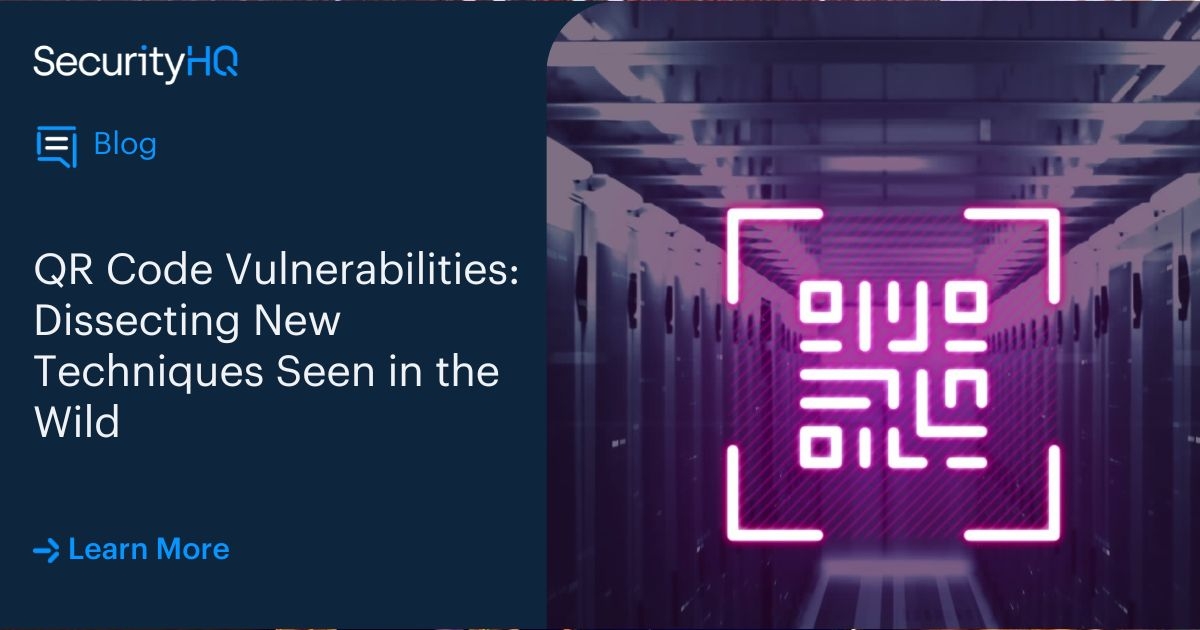QR Code Vulnerabilities: Dissecting New Techniques Seen in the Wild

SecurityHQ analysts have recently observed a significant increase in Business Email Compromise (BEC), regarding phishing attacks containing QR code (Quishing) and captchas for credentials harvesting.
This blog aims to highlight the sophisticated nature of this attack, to understand the technical aspects of session abuse, and its prevention.
What is Quishing?
In the ever-evolving landscape of cybercrime, threat actors are constantly discovering new methods and using them to target organizations. One such emerging threat is known as ‘quishing’ or QR code phishing. Quishing attacks usually occur via the scanning of a QR code. This technique involves tricking organizations users into scanning a QR code using a mobile phone. The QR code then redirects the user to a phishing or fake website that aims to steal their credentials.
Why Are QR Codes Being Used?
In the past, attackers used various types of URLs and attachments to deliver phishing emails. But, due to advanced email gateway security controls, bypassing the email gateway is not an easy task.
One of the main reasons why threat actors choose the QR Code is because it’s the simplest way to force a user to move from a desktop or laptop to a mobile device, which usually don’t have any anti-phishing protections. Additionally, they have multiple advantages over a phishing link embedded directly in an email.
Another reason is these phishing emails are easily getting through the email security gateways because currently email gateway sandbox is not capable to scan QR code and provide the verdict on whether it is phishing or not. Due to a lack of inspection from email security gateways, attackers are taking advantage and more commonly targeting users with QR code phishing technique.
How Quishing Attacks Work?
The attack begins with an email that claims the recipient must take action to update/view their organizational account settings. These emails carry PNG, JPEG, GIF, or attachments containing a QR code. The recipient is prompted to scan to verify their account. These emails also show an urgency to act within 2-3 days in the email subject such as “Urgent”, “Important”, “2FA” and tricking the user sending emails related to ‘salaries’, ‘increment’ and ‘appraisals’ etc.
The QR codes in this campaign also uses redirects in well-known domains such as Baidu, GoDaddy, and IPFS, etc. URLs to send the targets to a Microsoft 365 phishing page to evade security.
To view all the steps of this type of attack, provided by SecurityHQ analysts, with screenshots showcasing notes from the field, and recommendations to mitigate against such threats, view the full blog here.

